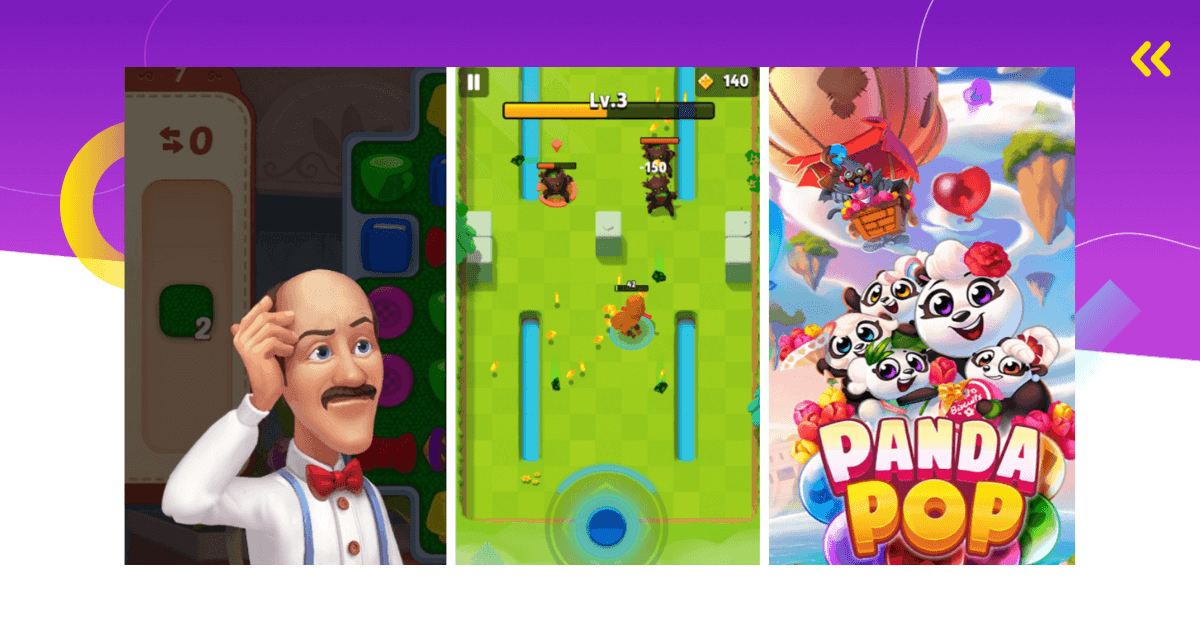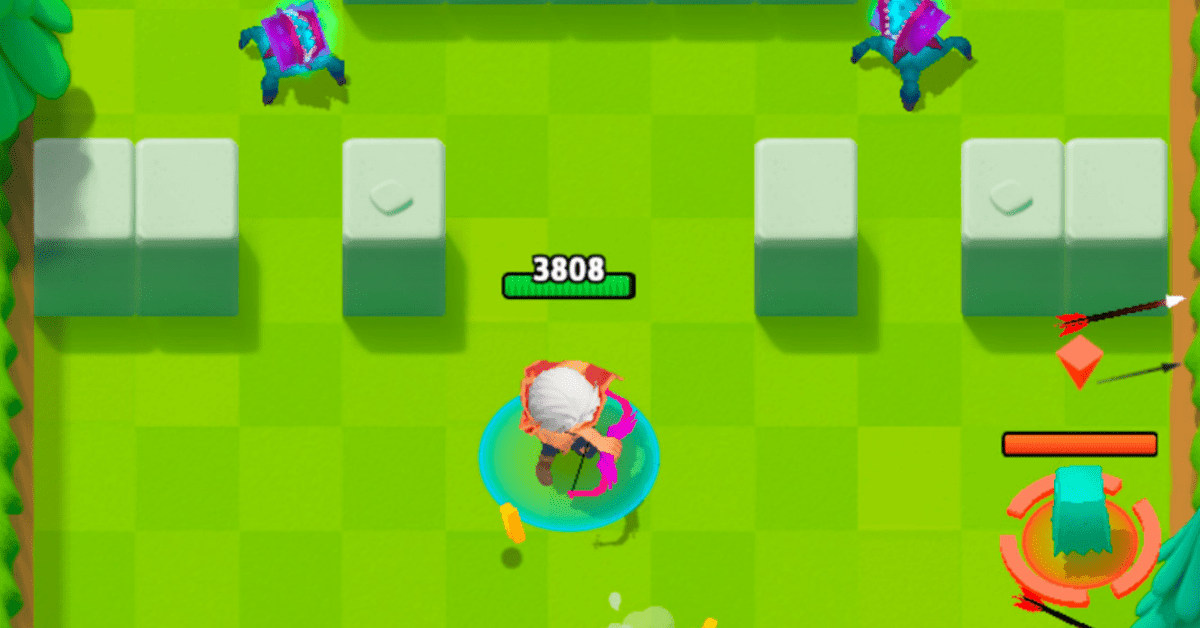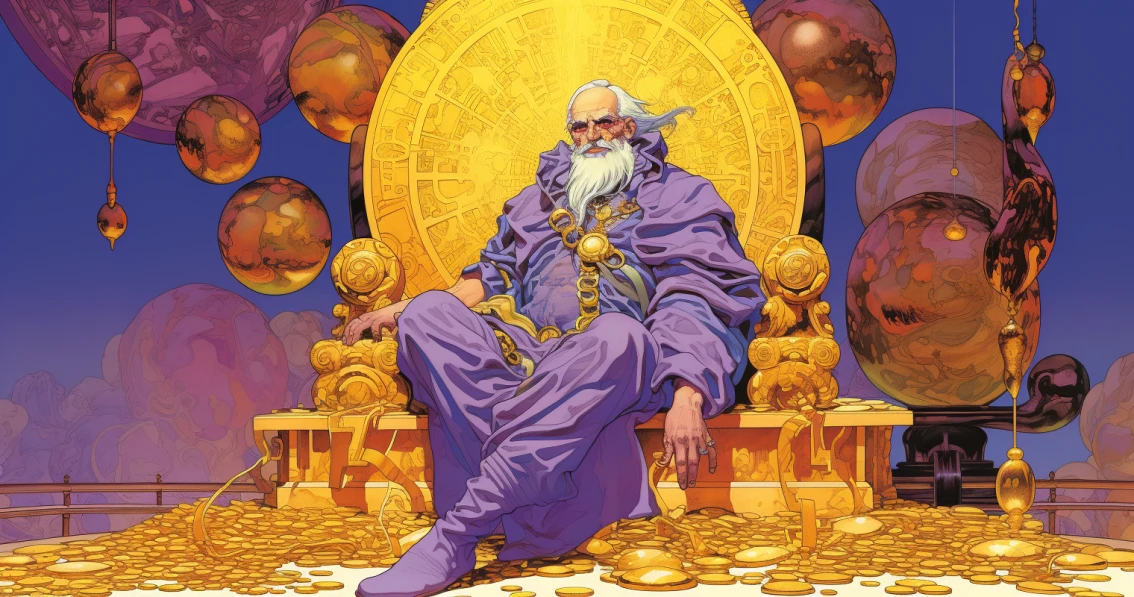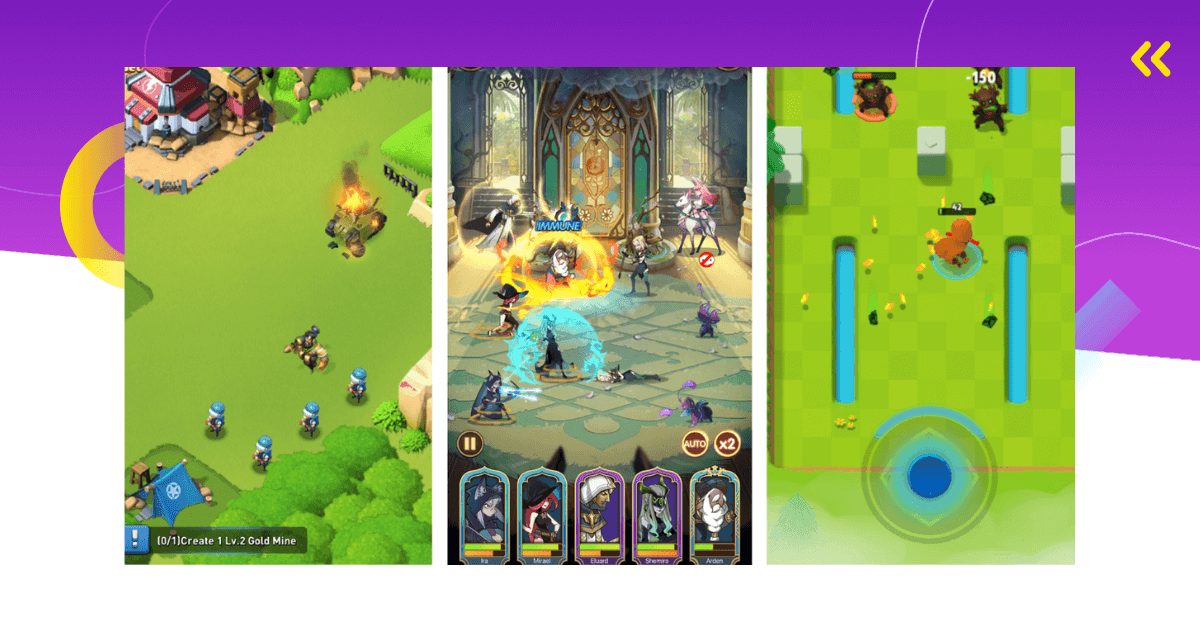“Just take the same core. We’ll do something different in the meta layer.”
Nowadays, this approach seems more common than ever.
Developers copy some kind of core gameplay that works, because, well, it works. Then, they add a bit of their own magic to the mix.
In this article, I will explain how meta layers affect game monetization. You will learn all about meta layer monetization and how it works. Plus, we analyze how top games get the most out of it.
Let’s dive right into it.
Meta Layers in Mobile Games
Meta layers, meta features, and meta-game. All of these terms describe the same thing – a big mobile gaming trend.
First, let me define them.
Meta layers are additional in-game content that supports core gameplay. They don’t consist of the game’s core mechanics. Also, they don’t make up the majority of the gameplay experience.
There is more than one reason why developers use meta layers. Some of the main ones are:
- Differentiation and in-game depth
- Additional monetization opportunities
- Attracting a broader audience
- Improving engagement and retention
Today, it’s really difficult to surprise mobile players. They’ve seen it all �– classic games, hybrid games, mini-games, etc. For this reason, they are constantly looking for new things and in-depth experiences in a game. Meta layers help you give them what they’re looking for.
They also help developers attract broader audiences.
Let’s say you have a puzzle match-3 game with a meta layer. It won’t attract match-3 players only. Depending on the meta layers, it can attract players interested in something extra your game has. We’ve seen great examples of this with decoration, storytelling, and fashion meta layers.
These layers don’t only attract different types of players to a game. They can also make them keep playing it. In addition to core goals, the game then has meta goals as well. The core gameplay may not be some players’ cup of tea. If this is the case, they will be meta-focused.
Want to know the best part?
Meta layers open up additional monetization opportunities. Of course, core gameplay drives most games’ revenues. Meta layers are mainly here to complement the core. Since they bring something extra to the game, they can give players more reasons to reach for their wallets.

The Meta Layer Trend
The mobile game market is saturated with tons of games with similar gameplay. This is especially true for match-3 puzzle games.
Nine years ago, players were happy with just crushing candies on the board. For a lot of people, the Candy Crush Saga was their first mobile gaming experience. It was enough to offer them simple, unique mechanics and a solid core loop. It was working, so there was no reason to mess with that.
Today, players want more.
For this reason, more and more match-3 games are adding meta layers. In this subgenre, it all started with Playrix’s Gardenscapes. They’ve taken the plain old match-3 and added narrative and decoration elements. Needless to say – players loved this.
Soon after, other popular match-3 games followed (e.g. Homescapes, Clockmaker). After that, more recent titles like Project Makeover took this trend to the next level.
As it seems, meta layers in match-3 games are becoming mandatory to stand out. Yes, the match-3 classics still have their places on the top charts. However, there are zero new successful titles that rely on this core alone.
Match-3 games are not the only ones that embraced the trend. All sorts of games in the casual genre are building outside the core gameplay. This includes different slots, dice, and word games. Basically, if a game has a simple core, it has to bring some more beef to compete.

Core Gameplay Monetization vs. Meta Layer Monetization
Casual games have always been about monetizing the core game. In most cases, this means offering assistance when players are stuck.
For this reason, most casual games offer players boosters, extra moves/lives, energy, revival options, etc. Whatever players may need to do better in the core gameplay.
On the other hand, midcore games have always been focused on monetizing meta layers. This includes features such as purchasable characters, skins, or skipping wait times.
As we already mentioned, casual games are changing and adapting.
Today, casual games are looking for ways to support core gameplay. A lot of them even build their whole branding around the meta layer (title, icon, ads). Therefore, when players launch such games, they expect meta to be a major part of the game.
If a meta layer has a big impact on players, it can turn them into payers. Meta is an important part of in-game progression and pacing. If players want to progress in the meta layer faster, making in-app purchases is one of their options.
Meta layers don’t even have to bring direct offers to the table. Despite this, their influence on game monetization is undeniable. Games that include meta layers can benefit from two very, very important things – engagement and retention.
If these two are looking good, this is a safe road to more revenue as well.
Nevertheless, many casual games also directly monetize via meta layers. For example, they limit the time players can spend engaging with the meta layer in a day. If they want to continue – they will have to pay for it.
All in all, meta layers support both core gameplay and monetization. As a result, games get an extra push they need to attract, keep and monetize different types of players.

Meta Layers and Player Motivations
There are different reasons why players install a game in the first place. After that, there are certain reasons why they keep playing the game. Finally, there are reasons that make them spend money on the game.
It all comes down to the experience players crave. Some players prefer social games, some prefer competing, while others like to express themselves in a game.
According to Facebook’s report, most players are driven by eight types of motivations.
- Self-expression
- Progression
- Social gaming
- Expertise
- Discovery
- Power
- Escapism
- Relaxation
Every game attracts players with a few common motivations. These motivations depend on what a game has to offer. By adding a meta layer, games give players more goals to achieve. This way, players get to connect to a game better.
Let’s say that a game that’s all about progression adds a self-expression (e.g. fashion) meta layer.
Just like that, it can attract a whole new group of players to the game. These players will probably have a strong urge to progress in the meta layer. As a result, they can become engaged players who make in-app purchases.
Popular Types of Meta Layer Monetization
Each meta layer comes with its own advantages and purposes. Sometimes, they even come combined.
Let’s take a look at four common types of meta layers you can monetize.

Collecting
Collectible meta can fit with almost every type of core gameplay. In this type of meta, players can collect anything from stickers to characters and items.
This is the up-and-rising meta layer trend. According to GameRefinery, the number of games with some kind of collectible meta is more than 2x higher than two years ago!
There is one particular collectible meta type that is driving the trend – collectibles albums. Since 2018, the number of 100 top-grossing games that use them went from 20% to 65%.
Collectibles albums are especially popular among slots games. In these games, the core gameplay is as simple as it gets. Therefore, this type of meta layer brings something completely different for players to engage with.
What is it about the collectible meta that makes it so popular?
One of their benefits is that they don’t affect core gameplay. At the same time, they give players a sense of long-term progression. As such, they give additional motivation for players to progress and maybe spend.
Upgrading
Some popular casual games borrowed meta layers from midcore games.
Therefore, we can find games with super simple core gameplay and some RPG elements related to upgrading. This includes things like upgrading equipment, characters, or items.
These meta systems complement the core gameplay and bring complexity and depth to the game.
With this system in place, players won’t worry about the core game only. They will want to upgrade on all fronts the game has to offer, which can boost game monetization.

Light Construction or Building
Another mid-core meta layer we often see in casual games is light construction or building.
For example, if a match-3 game also includes decorating a garden or a house, like Gardenscapes, this is a light construction meta.
Other games have a more prominent building meta layer, like Family Island, for example. In this casual farming game, players can build houses and even entire villages. Interestingly, this game has another mid-core meta layer – upgrading.
It all comes down to one thing – creating a game that is more interesting than a game with the classic, basic core. When a game combines core gameplay with an original meta layer, it creates a unique package.

Customization
One of the most popular meta-layers among many different genres is customization.
The best thing about it is that it can easily be added to any game genre, as it complements all types of core gameplay.
Here are some examples.
Most games have a main game character, regardless of whether users can play as that character or not. Because of that, adding an avatar customization option is the easiest way to utilize this meta layer and it works for all games.
By changing the appearance of a game character (facial features, makeup, hairstyle, clothes, etc.), players can express themselves. That makes them more connected to their character. The result is more engagement and an increase in in-app purchases.
But keep in mind that some customization options should be free, while others should come as an in-app purchase. For example, exclusive outfits or skins.
Customization can go beyond avatars. For example, you can add the option to customize buildings, cities, weapons, gear, vehicles, etc. – the sky is the limit.
Narrative Meta
This type of meta helps players get into the game. Games that have a narrative usually begin with some kind of an early twist. This is a hook where the game gets all of the players’ attention or loses it for good.
A narrative meta sets the game’s pace. This is something a lot of players love about it. It’s like reading a book. It can make players continue playing until they find out what the next big thing in the story is.
For the same reason, they may want to speed up their core game progress by making in-game purchases or watching ads.
The narrative meta often comes combined with other types of meta layers. For example, with light building and customization.
Some examples of games with narrative meta-layers are Family Island, Lily’s Garden, and Project Makeover.
Examples of Top Games with Meta Layer Monetization
The key to successful meta layer monetization is finding the ideal core+meta mix.
Let’s go over some popular games from different genres to see how they did this.

Project Makeover
Meta layers make this game much more than just a puzzle match-3. This game’s story revolves around its meta layers.
Project Makeover’s meta consists not of one or two, but four different parts:
- Storyline
- Fashion
- Hair and makeup
- Decoration
All of these layers are there to give players the feeling they are a part of a tv show. The show is about helping clients look better and feel better about themselves.
But then, there is a plot twist.
Early on, the game’s narrative displays a villain – the show’s director. Players need to take her place, but also stay aware of her constant scheming and interfering.

This narrative is what keeps a lot of players interested in the game – they want to know what the villain’s next step will be. On the other hand, some players can’t wait to dress up clients and decorate their homes.
Nevertheless, the majority of players are mainly interested in the core game. According to GameRefinery, Project Makeover gamers fall into two main categories: Thinkers and Expressionists.
The Thinkers enjoy the challenges of match-3 solving. These players are most likely to spend money on things like extra moves, boosters, or extra lives. All of these help them pass levels and progress.
The Expressionists are players that like to express themselves through gameplay. They are emotion-driven and like to dive deep into the game’s story. For this reason, they are engaged with the meta layers of the game. Whether it’s fashion, decoration, or the narrative, this game has something for different types of Expressionists.
Now, Project Makeover does not try to directly monetize via its meta layer. This layer is here to provide a story that will attract and keep a broader audience. However, the core and meta are codependent.
Because of this, players engaged with the meta layers will potentially spend on the match-3 board. They would do this to accelerate core progress and get to their favorite parts of the game faster.
Besides, time spent in meta layers is limited. Therefore, spending can give them longer sessions in the meta layer.

Archero
If there were no meta elements in this game, Archero might as well have been a hyper-casual game.
The thing is, Archero’s core gameplay is super simple. It can be summed up into two actions – move and shoot.
It’s the game’s meta elements that bring depth and complexity to the game. This includes:
- Collecting characters
- Acquiring abilities
- Collecting equipment items
- Upgrading weapons and characters
These elements fall into the RPG meta category, but they are wildly simplified. The purpose? Attracting a casual, yet engaged player base.
It’s only logical that without these layers, this game would have low player LTVs, just like hyper-casual games. If this were the case, Archero would probably monetize with interstitial ads.
However, that’s not the case. Archero monetizes with in-app purchases, subscriptions, and rewarded video ads. A casual game without this kind of depth would hardly be able to utilize these monetization models. Simply, players wouldn’t be equally motivated to spend money on this game.
According to GameRefinery, there are two main player archetypes who play Archero: Skill Master and Thrill Seeker.
Skill Masters are always looking for ways to upgrade and improve their skills. This is exactly what they can do by engaging with Archero’s meta layers. On the other hand, Thrill Seekers are more into the core’s fast-paced gameplay.
The Skill Masters will do anything to progress in the meta layer. This includes spending money. They are highly likely to spend on some of the game’s bundle deals. These bundles bring all sorts of upgrade items these players are interested in.
The meta layer also supports ad monetization. Free-to-play players will also want to upgrade their characters. They can do this by watching rewarded video ads.

Cash Frenzy
Slots games come with almost identical core features. For this reason, they add all sorts of elements to stand out.
This is where meta layers come into play.
The casino genre and the slots subgenre are dominated by collectibles albums. Since they don’t alter the core gameplay balance, they are a great fit for such games.
On top of that, they bring coins. And if there is one thing all slots players always need, it’s some extra coins.
Cash Frenzy players unlock this feature once they reach level 5. In this game, it’s called the “Stamp collection”. According to GameRefinery, most players in this game are Thrill Seekers and Treasure Hunters.
Thrill Seekers are adrenaline junkies always looking for thrill and excitement. This is something they can find in the core slots gameplay, but also in the game’s meta layer. Just like the core, Cash Frenzy’s collectibles album meta is also luck-based.
Treasure Hunters just love exploring and collecting new things. Therefore, the meta layer brings them the treasures they are looking for. These players are more likely to focus on completing albums. Hence, they might spend money to make that happen quicker.
Cash Frenzy is pretty direct with meta layer monetization. The time players can spend in the meta layer in a day is limited. Therefore, if players want to keep playing, they should be ready to spend.
The game even has a special currency designed specifically for the meta layer – emeralds. Players can purchase them in the game’s store.
Even though they are not the most popular purchase of the game, they make a nice addition to the game’s IAP offer.

Bubble Shooter: Panda Pop
This bubble shooter game also embraced the meta layer monetization trend. On top of the core – blasting bubbles and saving baby pandas, players have a few other things to do.
Recently, the game introduced a light construction meta. In this layer, players need to reveal and decorate different rooms.
They can do this by using a special meta layer currency – essence. However, players can’t directly purchase essence. To earn it, they need to finish levels on the first try. This might encourage them to buy things like boosters that directly help them complete levels.
Nevertheless, this layer supports players’ motivations to play the game. Most of this game’s players are Thinkers, Skill Masters, and Expressionists.
All of them can get something out of the game’s meta layer. Thinkers will be extra motivated to do their best at finishing levels. Skill Masters want to excel at everything, including the meta layer.
Expressionists enjoy the meta layer because, well, they get to express themselves. These players love things like building and customization. And this is exactly what Panda Pop’s light construction meta brings them.
On top of all of that, there is one thing all these players benefit from – rewards. Once players finish decorating a piece of land, they are fairly rewarded. Plus, they unlock the next room they need to decorate.
All in all, Panda Pop’s meta layer brings an additional sense of progression and depth. In the long run, both of these can give players more reasons to make in-app purchases.

YAHTZEE
Yahtzee is a popular, classic board game.
When players launch this game, they know exactly what they want from it – competition and fun. In Yahtzee, players compete against random opponents or friends.
As of September 2020, the game also catched up with the meta layer trend. More precisely, it added a collectible meta. It comes in the form of a “sticker collection”.
Here’s how it works and what’s in it for the players.
Players need to win games to earn stickers. Once they collect sets of stickers and complete albums, they get great rewards. And if they complete a collection they can earn a grand reward – exclusive dice. All of this motivates them to win as many games as possible.
Since the game monetizes with in-app purchases, this can help boost them. In Yahtzee, players mostly purchase bonus rolls. Of course, because they always want to win. The collectible meta gives players even more reasons to win (and buy even more bonus rolls).
Wondering who plays Yahtzee and why?
Most Yahtzee players fall into the King of the Hill and Thinker player category.
For Kings of the Hill, this game is all about competing and winning. Thinkers enjoy the game because it leads them into a world of problem-solving.
Nevertheless, by adding a meta layer, the game also attracted some Treasure Hunters. This group of players loves to find and collect stuff.
All of these groups have some benefits of engaging with the meta layer. For some, it’s all about the rewards to use in the core game. For others, meta progress is equally important.
Generally, it’s great how this game intertwined the core and the meta. The way it’s done, it probably has a great effect on user retention (and revenues).
Final Thoughts on Meta Layer Monetization in Mobile Games
As you can see, meta layer monetization is no exact science.
However, one thing is for sure. If it’s done right, you will see better results in different aspects, from installs to retention rates and revenues.
Have some thoughts on this? Leave a comment below.







Comments